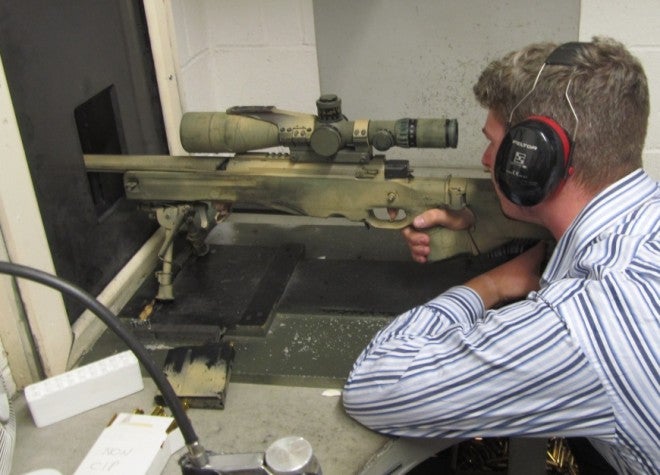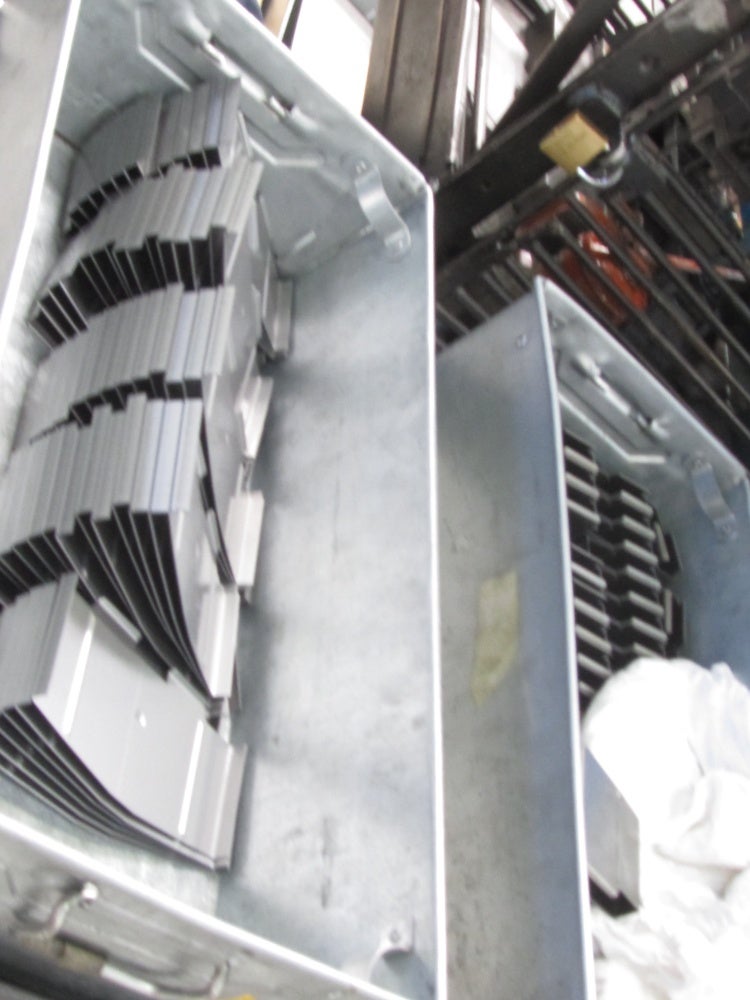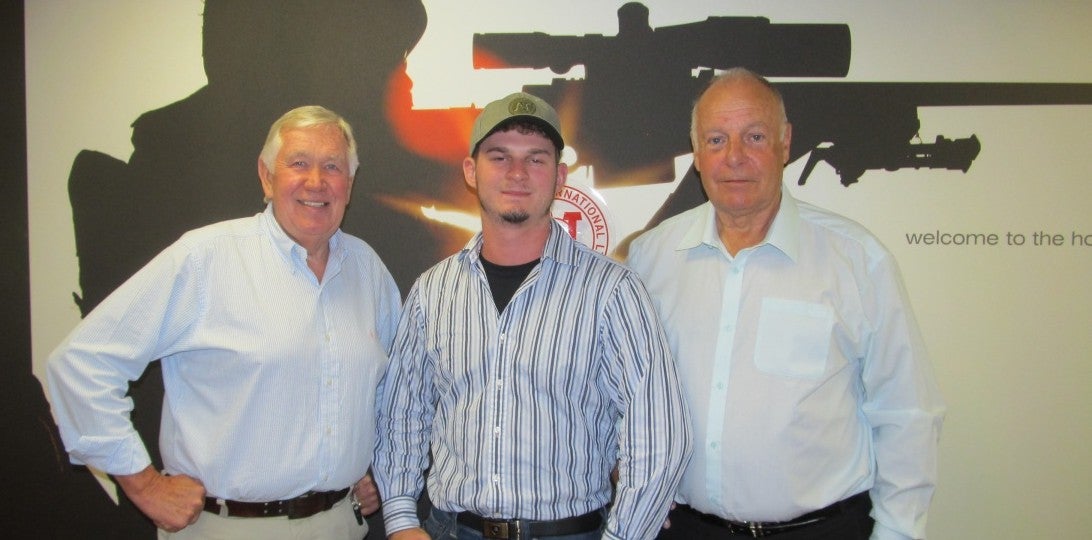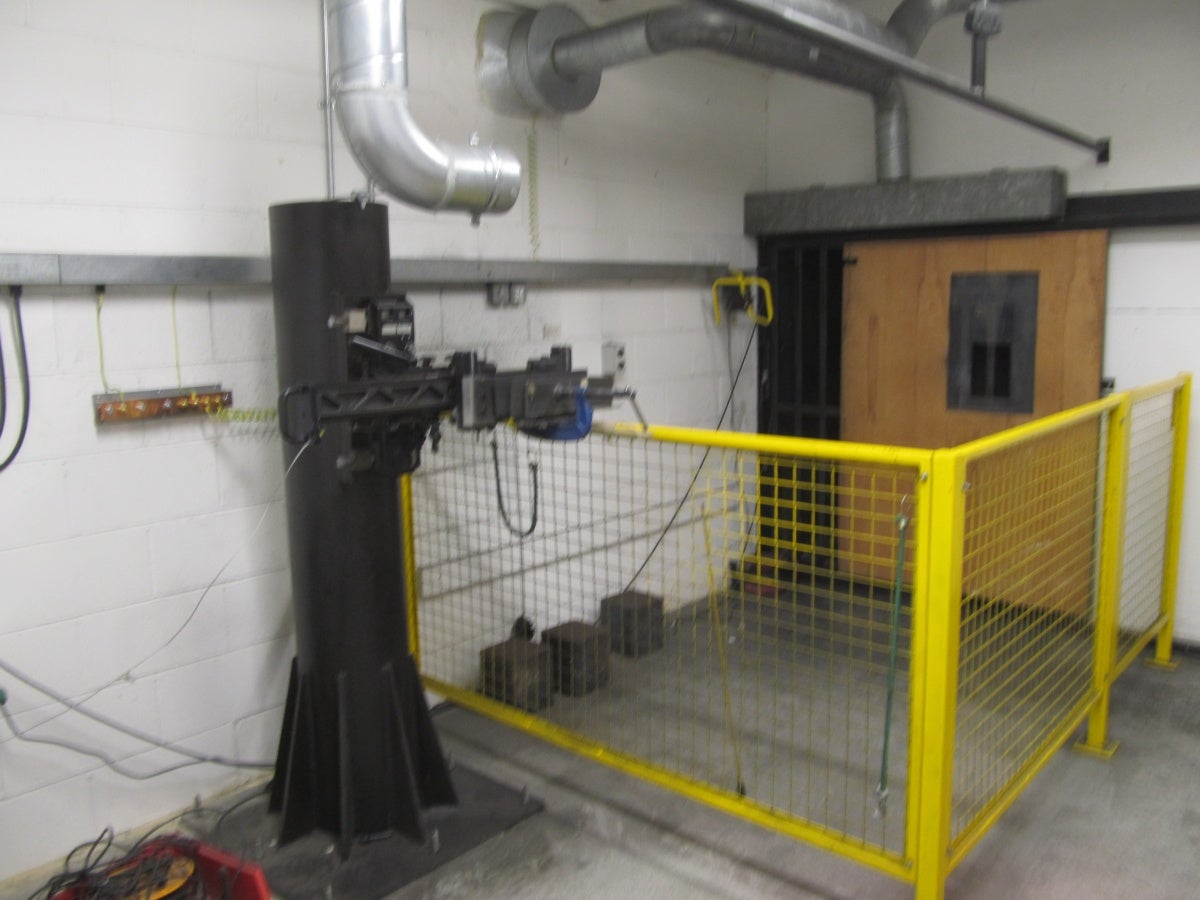
One of the shooting testing rooms at the Portsmouth facility. This is for function testing, barrel proofing, and research. When the London Proof House sends their team down, this room becomes an extension of the Proof House for that period of time.
“The gun has to work, and it has to work well” is a guiding principle that Dave Walls sets his companies standard to. And as well he should, because as one of the founders of Accuracy International, he co designed and brought into production the L96, otherwise known within the Portsmouth production facility as “The best sniper rifle in the world” and to British Infantrymen- “The Green Meanie”. Currently the Guinness World Record of the furthest confirmed kill in combat is held by a British soldier at 2,475 meters. The rifle used? An L115A3 in .338 Lapua Magnum made by Accuracy International. The company has supplied over 30 militaries the world over with it’s precision sniper rifles since 1984 when the British SBS expressed interest. It’s stand alone stock, the AICS is taking the American precision market by storm, being fitted to the popular Remington 700 action all over the United States. The company almost made it in the PSR competition, going up against the giants of Remington, FN Herstal, and Barrett. Ending as a finalist, the competition helped propel AI into it’s new product line, the multi-caliber AX. However, this reputation wasn’t always as such, the company had a number of tough beginnings.
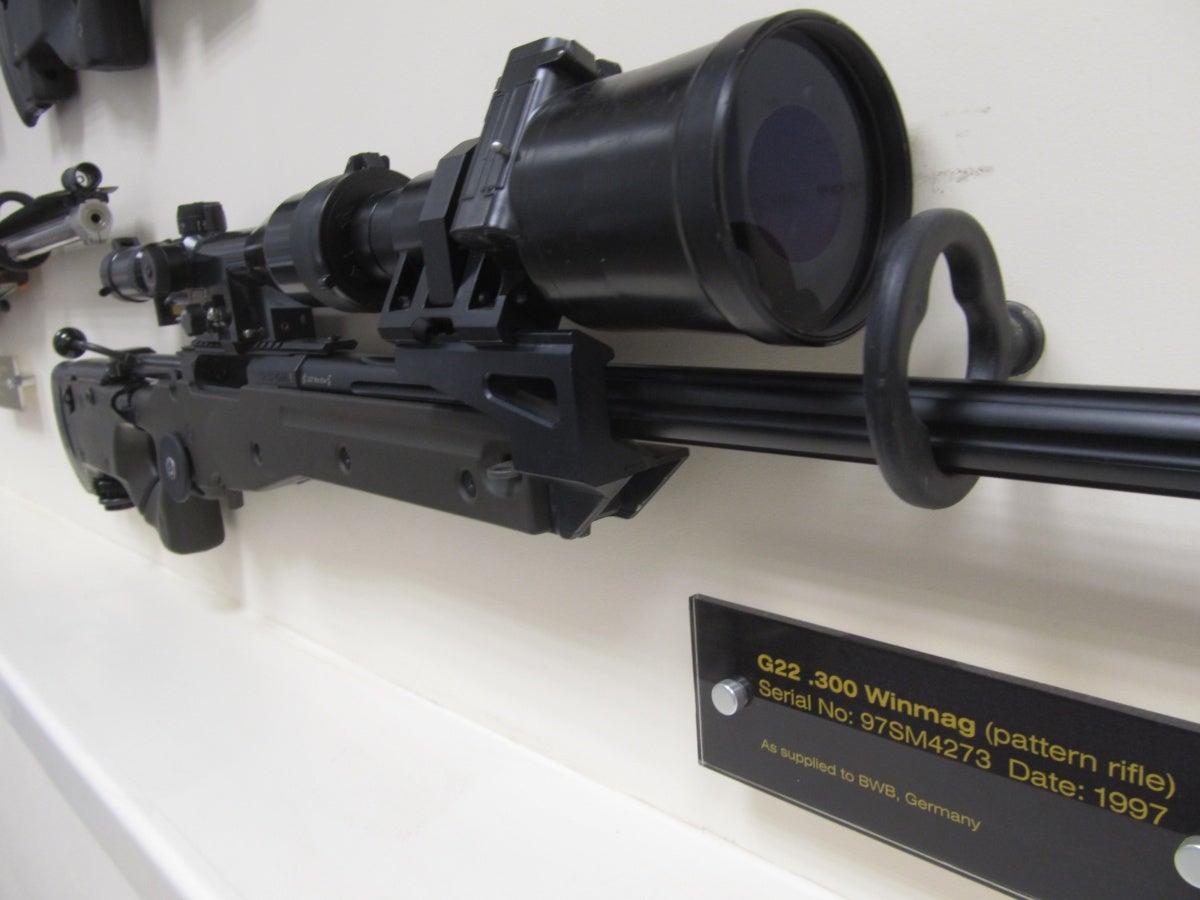
German G22 .300 Winchester Magnum rifle on display. Needs of military snipers for night optics, and front mounted rails such as this were shown in the PSR contract rifles and all current Accuracy International AXs with the full rail systems.
After the 1982 Falklands War, it became evident that the MoD needed a new sniper rifle. The sniper rifle in use was the .308 L42A1 which did not fair very well in the conflict. Because it had a wooden stock, when water logged, the stock would swell and accuracy would be impaired. Although magazine fed, it was not operated with detachable magazines but a magazine that stayed in the rifle. It was also based on the Lee Enfield service rifle and thus almost obsolete technology by the mid 1980s. A request was sent out for a trial of a new sniper rifle to replace the L42A1.
“At first we didn’t think we would win the British Army contract. Out of 16 competing rifles we passed the first qualifications, then we were in the next round of 9 rifles, and then it came down to the final 3 rifles, and I started worrying ‘ Hey, we might actually win this thing” Says Walls about the initial contract competition. In the beginning, Walls was a small time engineer working at a local tool making process. An avid competition shooter, he had a passion for shooting since his teen years, eventually almost making it to the British Olympic squad. In his spare time be repaired rifles and pistols, taking payment of a drink at the local pub if a project was successful. Eventually his name got around southern England’s shooting enthusiasts and he was taking on repairs from counties further than his own. And a local drink at the pub wasn’t a viable source of income anymore, especially with a new family to support. Putting together some calculations, Walls figured out that he was bringing in more money from repairing rifles than he was from his position at the grinder machine at work. Giving in his months notice, his boss quipped that “You’ll never be more than a small time gunmaker”. In a way, the boss was right, even today Accuracy International employs only around 70 people at both it’s facilities. But contracts to SOCOM and the British MoD are not small time in the least.
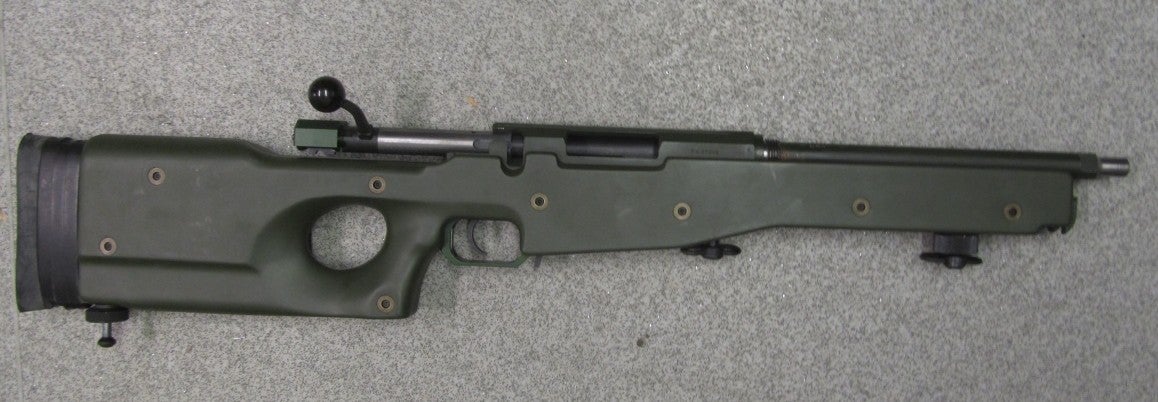
One of the companies initial L96 contract “Green Meanie” rifles. With the exception that this one has been cut down and fitted for a suppressor. Notice how the rear of the stock is completely flat, to allow for bench resting or a sandbag rest. Also note the moving sling mounts, indicative of earlier schools of thought regarding placements of sling swivels and boss’s.
Along with an Olympic shooter named Malcolm Cooper and a fellow competitor Dave Caig, the three begin designing rifles, using a garage as a workshop. The first rifle they designed was a .22 target shooter, intended for the civilian market. They took the name from Malcolm Cooper’s gunshop: Accuracy International Shooting Sports. Coming from a target background, this is the distinction from many other sniper rifle designs of the period, the rifle was designed as a precision weapon from the very beginning. Most sniper rifles up to the 1980s were initially designed as hunting or military rifles and later converted or redesigned to become sniper rifles. Remington 700, Parker Hale, SVD, or the H&K PSG1. These were fine rifles in their own right, but they were initially military or hunting designs and thoughts of precision accuracy were aforementioned. Whereas Accuracy International began with precision and worked from there. Says Walls, “Take the thumb hole stock, we went with it because it forces a shooter to be in the correct shooting position of being inline with the rifle….. the flat bottom design of the stock is intended for benchrest, so the rifles recoil is forced along a straight motion”. In addition, the three founders were of different body types. Cooper was the smallest at around 5’3, Caig coming in at an average 5’8, and Walls the biggest at 6’3. This allowed them to come up with an optional design to fit all sizes of shooters. Some parts were a complete coincidence. The flat-bottomed/ square receiver has been hoarded as a revolutionary design because of the strength it holds as opposed to a round one and it’s ability to take double stacked magazines without much modification. How did Walls come up with it? He was looking for a piece of steel around the shop, and the closest one at hand was a steel bar and no round ones were available so he went with it as a foundation for the receiver.
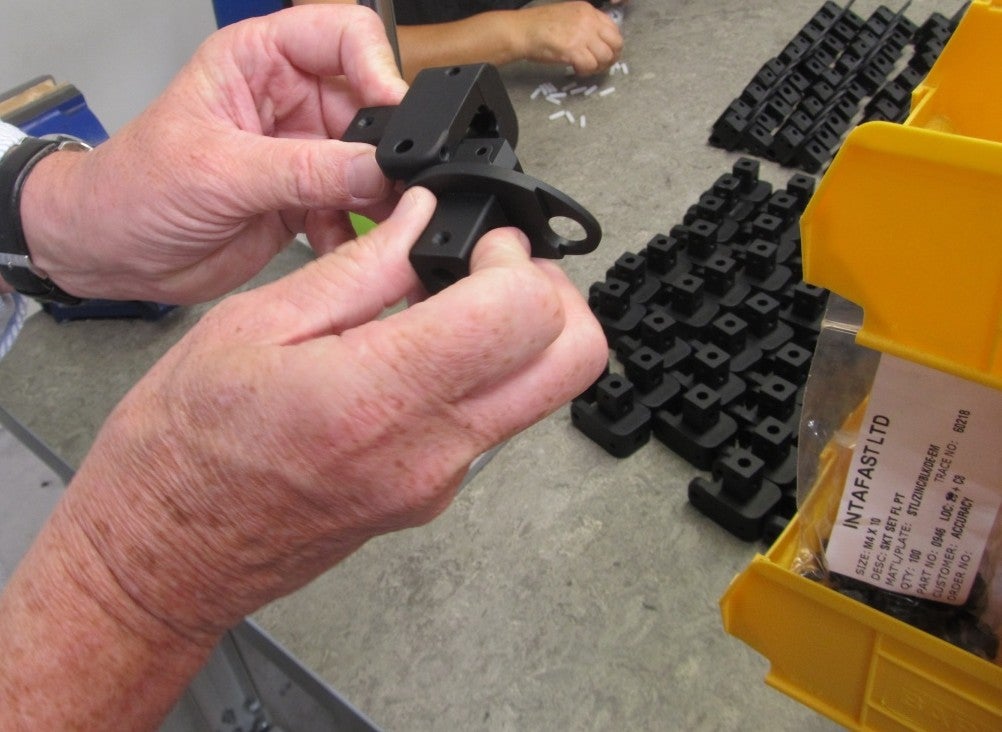
Tom Irwin shows how the initial parts of the stock swivels will fit together in the finished product.
But the company wasn’t an immediate success in the beginning. After winning the British Army contract and the MoD realizing the gun was constructed in a garage, Accuracy International had to subcontract many of it’s parts out to various companies around the UK. In 2000, after over 15 years of production, the company only had 2 CNC machines, one of which didn’t even work and the other one was making front sight posts. Today AI has over 30 and two full manufacturing facilities. During the 1990s Accuracy International was surviving on contract to contract, barely making ends meet. Even it’s marketing scheme was almost self destructive. It took the approach of being “Quiet Professionals”, that instead of marketing the rifles publicly, “word” would get around to customers about it’s reputation. The most publicity it would shoot for was in various movies and TV shows of the period where AI’s rifles were used in. “Back then, the company wouldn’t be sitting here talking to you [writers]” says Tom Irwin, co director of the company with Walls. This approach may work for a company such as Holland & Holland with a prestigious customer base, but it did not go well at Accuracy International.
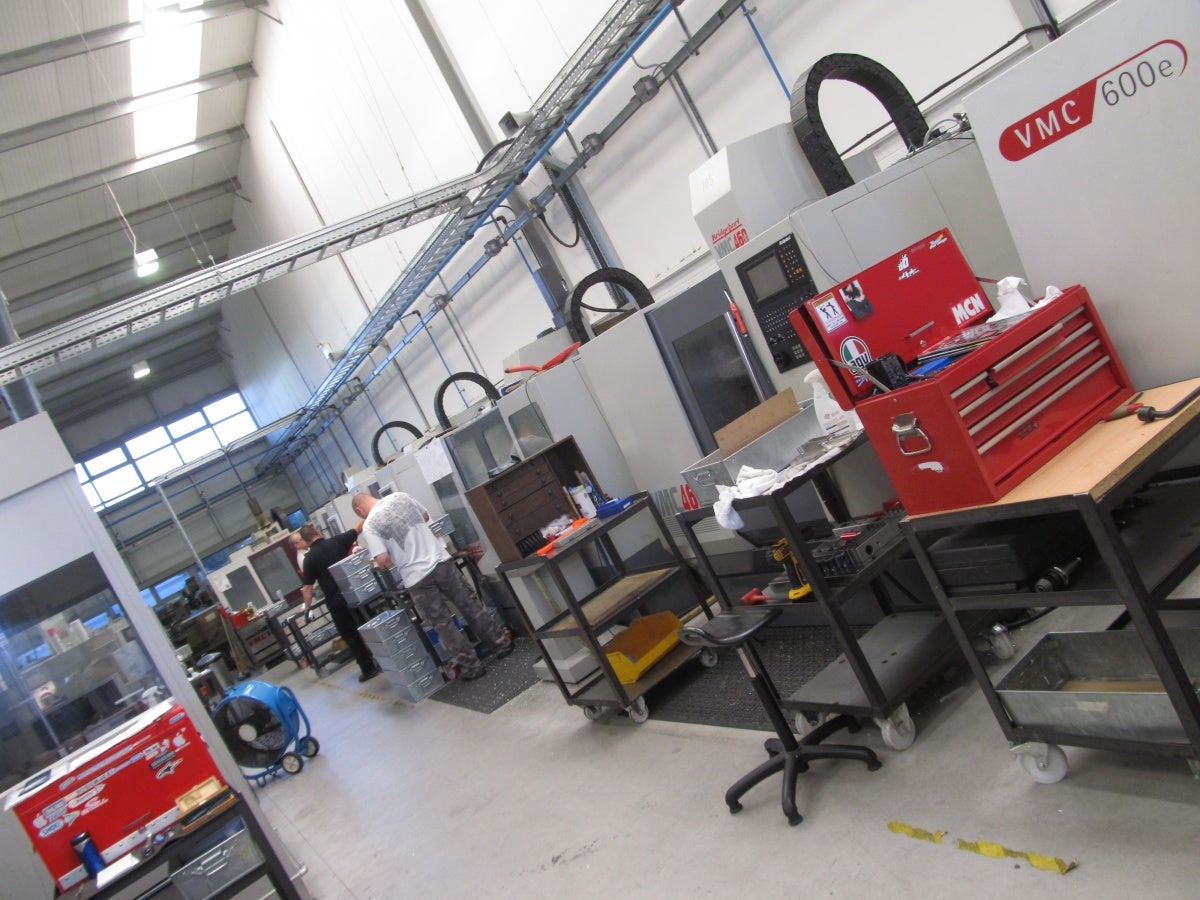
This is a far cry to what the company looked like in the 1990s. Although these may seem to be neatly spaced work stations, the placement of every machine is according to a very particular work flow of every part.
Malcolm Cooper sold the company, retaining 10% of the shares and then still worked for the new owners up to his death and it was thereafter ran by a group of investers that didn’t have any experience in producing rifles. Walls was left to a side show position barely even being consulted on design decisions. But there came a high point with the Swedish trials of 1993, with requirements of functioning in -40 C conditions. The rifle that resulted from this was the Arctic Warfare, a design from which the company has not looked back from. Coupled with it’s involvement with Lapua to design the .338 cartridge around the Arctic Warfare (AW), these two developments carried the company through the late 1990s. Alas, in 2005 AI declared bankruptcy. Tom Irwin and Dave Walls (Dave Caig continued to work for the company up to the time of bankruptcy and was one of the new owners up to the time he retired around 2008. He still continues as a consultant) immediately put together a plan to buy the company and make them sole directors. It worked, and with a staff of 10 employees, AI was off to new beginnings. Gone was the redundant marketing approach and subcontracting. Irwin, with a full career in the aerospace industry, changed the way marketing was conducted and brought the company up to modern day standards of quality control. Scores of new machines were bought, and today most of the rifle is made in house. Thorough testing has greatly increased as well. Every single rifle fires a 5 round group in the 100 meter test range, and if it isn’t 1 MOA, the barrel is replaced or the rifle worked on until it is up to standard.
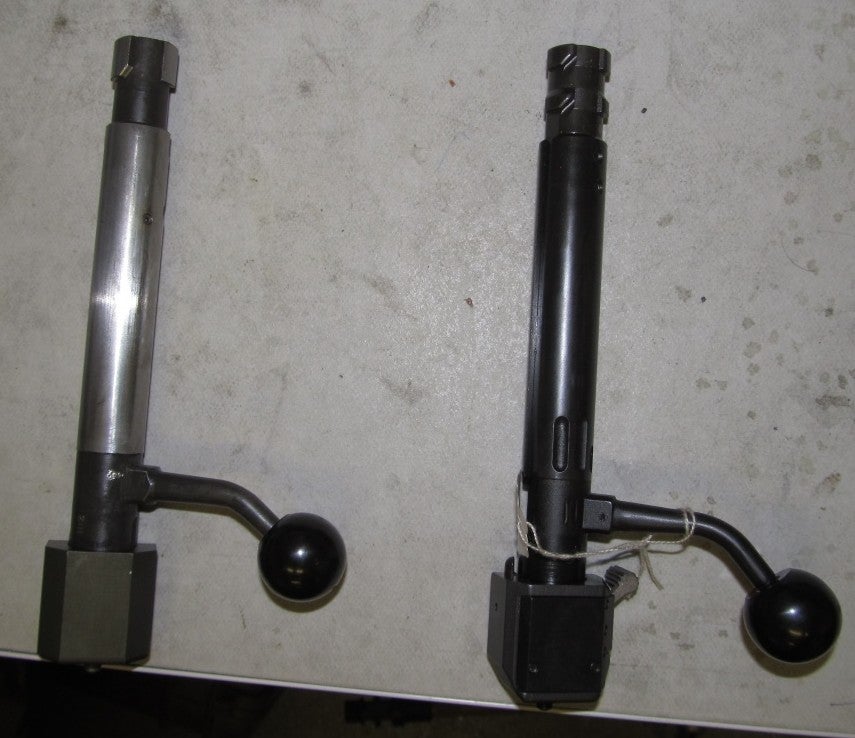
Two examples of an early bolt head and a current bolt head. The 3 lug bolt on the left was made for a .308 round while the right design was created for the current AX series and has a 6 lug bolt head to handle the larger calibers. From the beginning of development, the bolt handles have been made with a 60 degree throw, which has proved to be very optimal in rapid bolt manipulation.
So why did Remington beat out Accuracy International during the Precision Sniper Rifle competition? For one, winning a contract with the British military and winning one with the American military are on two different levels of mass production. Although the company probably could have managed to pull through, it might have had to build another manufacturing plant just to fulfill the contract on time. As opposed to Remington’s capacity to churn out hundreds of thousands of rifles a month on top. Even Dave Walls, when asked how many rifles he produced in total since the early 1980s, said probably not more than 20,000. This is surprising considering the company is renowned the world over and is recently breaking into the competition sector in the United States by storm with the AICS stock for the Remington 700. Another reason that might have swayed heavily towards Remington’s favor was the home grown team mentality. With that being mentioned it must be noted that much of the US military’s small arms armory isn’t even from the US at all. FN Herstal, Beretta, Sig Sauer, and Hecklor & Koch make our M9s, M16s, M249s, and M27s. This fact might have played heavily in Remington’s favor for American jobs and keeping manufacturing on American soil. Tom Irwin notes that if the roles were reversed, and the two were facing off for a British MoD contract, Accuracy International would be shamed if a foreign country took that from them. Regardless of the results, the competition allowed the company to expand it’s product line into the AXMC (Multi-caliber, .308, .300 Win Mag, .338 Lapua), the new flagship rifle.
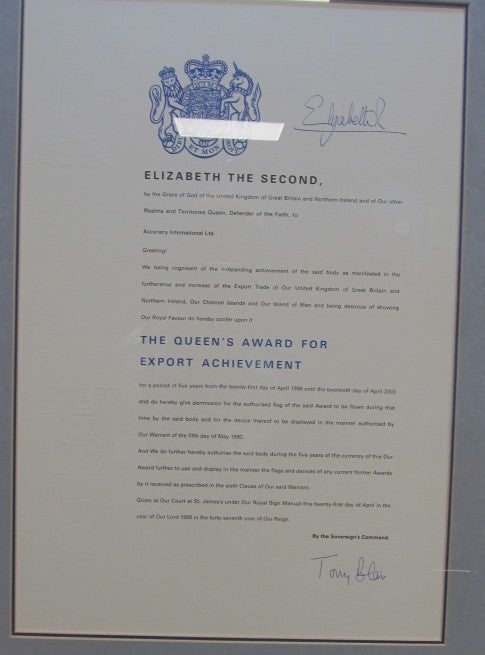
The Queen’s Award for Export Achievement, given in 1998 to Dave Walls and Dave Caig in person at Buckingham Palace.
The factory has come an extremely long way from the aforementioned garden shed production office that it started off in during the mid 1980s. Between the mid 1980s to the mid 1990s, there really wasn’t much of a central factory apart from the meager facilities in Portsmouth. The rifles were contracted out to various industrial companies dependent on the contracts that the company won. This caused numerous friction points between the companies manufacturing them and the design team. Once such point was remembered very fondly by Dave Walls over the bipods for the Swedish contract. The contract had been won, but the company providing the bipods suddenly demanded the money for said bipods. Walls couldn’t pay them because he hadn’t delivered the rifles that the bipods would be on in the first place, and thus didn’t have the money for them. Walls told them that if they didn’t deliver the bipods, he’d make a complete copy on his own. The company threatened to sue him if he did that, to which he replied that they could sue him all they wanted, but he had a contract to fulfill and needed those exact bipods that were specified on the contract. Situations such as these continued to develop and were precisely the reason that Walls and Irwin almost completely consolidated the company in 2005. Today, major components such as scopes, barrels, and bipods are bought from outside sources but the majority of the rifle is manufactured in house. It also must be said that even though barrels are brought in from the outside, they are more throughly tested at the Portsmouth facility than they are at the origin factory!
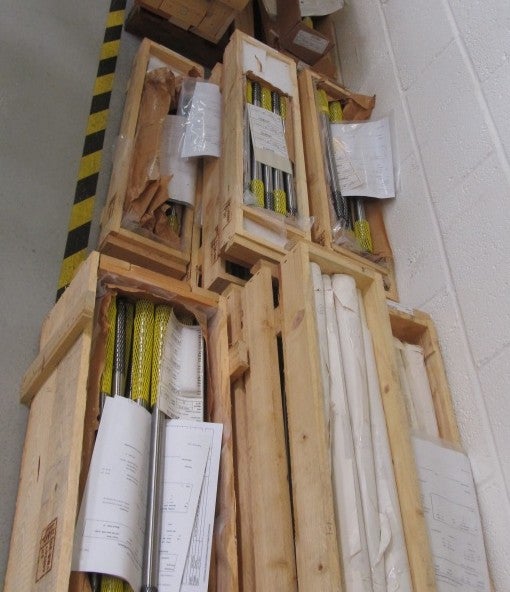
Barrels fresh from the outside contractor. These will be individually examined and inspected, if standards don’t come par with Accuracy International’s, they are sent back.
Consolidating the manufacture of AI’s rifles has allowed research and development to flourish at unprecedented levels that wouldn’t have been possible when the company was fragmented. High speed cameras and lasers that attach to the rifles show problem areas and speed design ideas. One study that has been published publicly by Accuracy International involved the testing of fluted barrels and AI actually proved that going with a conventional barrel was better than a fluted one in terms of accuracy. The company has a 3D printer that it uses to rapid prototype parts within minutes as opposed to machining them in days. Irwin introduced streamlined manufacturing techniques that allowed more efficient completion of the components before leaving the facilities. When the company was fragmented, it had to send its barrels into the London Proof House to be proofed. Now it’s large enough to warrant employees traveling to Portsmouth once a week and proof the guns there. The testing room they occupy literally turns into a sub division of the Proof House for time they are proofing guns, along with all their official jurisdictions.
Although other modern firearms designs have made great strides in their standards compared to Accuracy International’s since it first introduced the revolutionary L96, the company is insistent that they will be leading the way in precision sniper rifles, instead of catching up to the rival competition. With a design team hand picked and mentored by Walls, some of the finest machining equipment in the industry and the international military and civilian market’s attention, they have an enormous task to prove that they “Make the best sniper rifle in the world”.
 Your Privacy Choices
Your Privacy Choices
